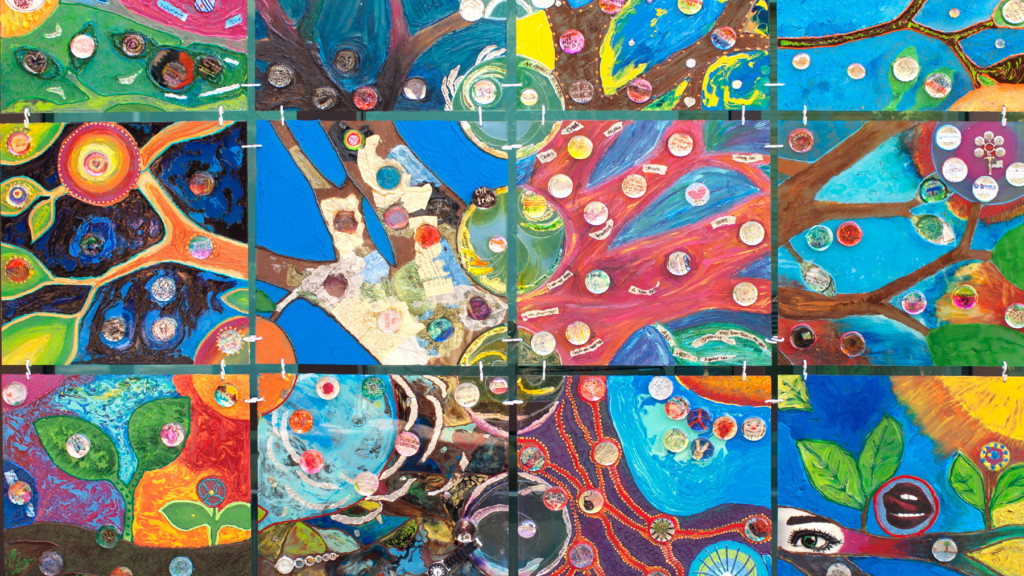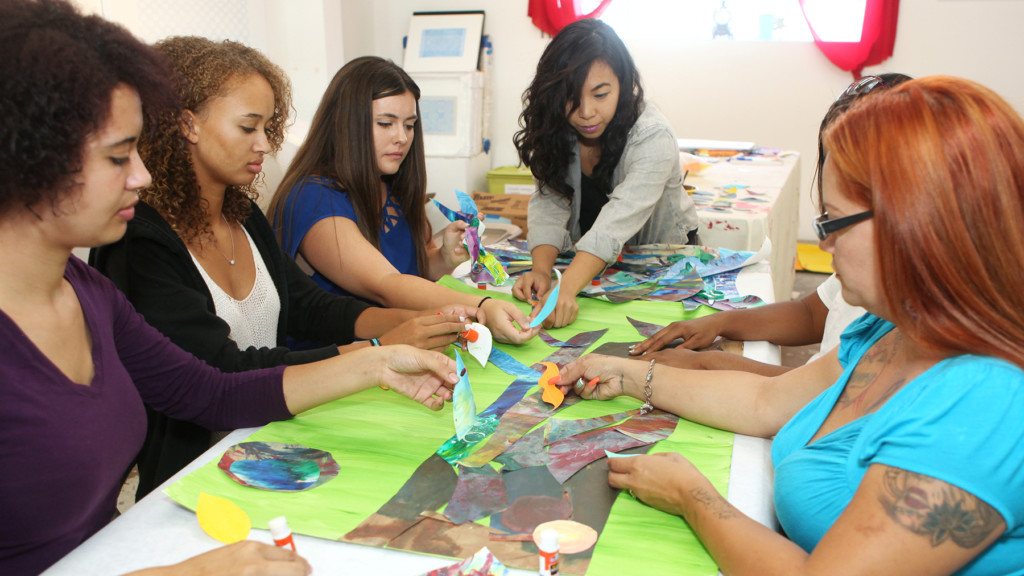by Sherisa Dahlgren, LMFT
Windows Program Consultant & Facilitator
I have known about AWBW for decades. For therapists in Los Angeles focused on trauma within the social service field, AWBW is a local icon and has a beloved following.
However even though I was a frequent flyer in accessing their arts curriculum to help increase engagement with my clients, I never thought that much about why AWBW is so effective. That is until one of my social service adventures provided me the opportunity to work more in depth with the AWBW model.
Tasked with creating a retreat model that could be utilized as a residential and holistic approach to address complex PTSD for survivors of sexual assault and domestic violence, I surveyed my training and knowledge base for what would be most effective to include. This model was to be studied by Georgetown University and eventually become peer reviewed and published, so I really needed techniques and interventions that could stand up to that level of rigor. My mind immediately landed on AWBW.
The model was designed as a 5 day residential treatment approach utilizing an array of holistic and trauma informed modalities, with an AWBW workshop strategically placed on the 3rd day as a way for participants to access, externalize, integrate and understand the experiences occurring throughout the retreat.
The Holistic Healing Retreat Model was peer reviewed and published (2017, 2020 & 2023) and found effective in significantly reducing symptoms of depression, PTSD, anxiety, and discomfort/pain. These improvements were measured against traditional talk therapy typically offered by community mental health agencies. In addition to “symptom reduction” participants also reported increased hope and a strengthened sense of self-agency, with both symptom reduction and these positive outcomes persisting at three and six months post-retreat.
It is my personal belief that AWBW was core to these positive outcomes. From this intense 10 year long treatment development and design journey I learned more about the process of healing than I ever knew before jumping down the research rabbit hole. And much of what I learned I then noticed were naturally occurring elements of the AWBW model. Radical self agency? Check. Deep reconnection to each individual’s natural sense of health? Check. Room for free self expression unhampered by interpretation of others? Check.
One significant outcome of the research process was the creation of the Arc of Healing, a matrix used to identify and track the healing process participants traveled through over the course of the retreat. Starting with building safety (crucial to any healing process), traveling through connection, awareness and expression – all the way to integration of new knowledge, beliefs and feelings – the arc was a way for the retreat team to identify key elements of the healing process and support a gentle yet effective pathway forward for each individual. The art workshop was positioned as the peak of the arc and was where participants got in touch with their own wisdom, which is key to the healing journey.
In many ways the research process, and the arc of healing specifically, shifted how I hold space in any therapeutic setting as well as how I view the personal experiences in my life. Have I accessed enough safety to try this new healthy risk? Have I taken the time for personal reflection and awareness? Have I taken the time to integrate what I have learned? As a therapist, being able to hold these key elements in my mind as a trauma informed guiding light gives me the room to be flexible to meet my clients’ needs while at the same time living within a structure that I know that is research supported and effective.
As fate would have it, I was gifted the opportunity to evolve this resource again when I came on as a board member and program consultant for AWBW in 2021. Looking at the Arc of Healing next to the structure of an AWBW art workshop, we found that the stages of the arc mapped perfectly onto the workshop steps, so that participants were led through a healing arc within the course of every art workshop.
Not coincidentally, the Arc of Healing is also observable in most relationships, communities and group endeavors. Because healing is relationship centric – the relationship with ourselves and the community we build – and as such is active for all of us. It is my hope that this resource will support the over 1,200 trained AWBW facilitators across the nation and the world in the same way it supports me every day. We are all traveling an arc of personal healing. May this resource help us remember that the healing we’re journeying towards is not only possible, but probable.
by Sherisa Dahlgren, LMFT
Windows Program Consultant & Facilitator
Download the AWBW Arc of Healing handout to explore the methodology behind our workshop structure.
Workshop Structure & Arc of Healing
Want to bring healing art programming to your workplace or community?
A Window Between Worlds (AWBW) supports hundreds of direct service organizations across the country to incorporate creative expression into their work with trauma survivors. With this blog we uplift the voices of our art workshop facilitators and participants. We invite you to take in this perspective, notice what resonates and explore how it may fit into your life.





